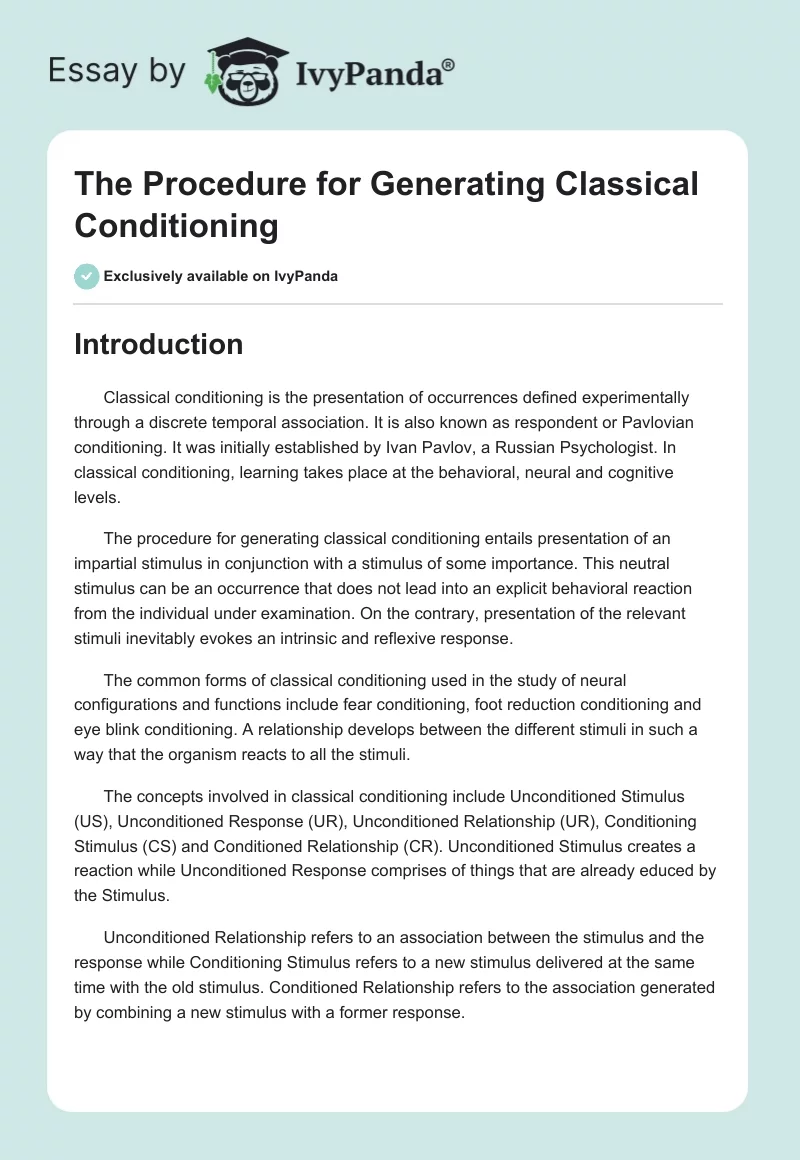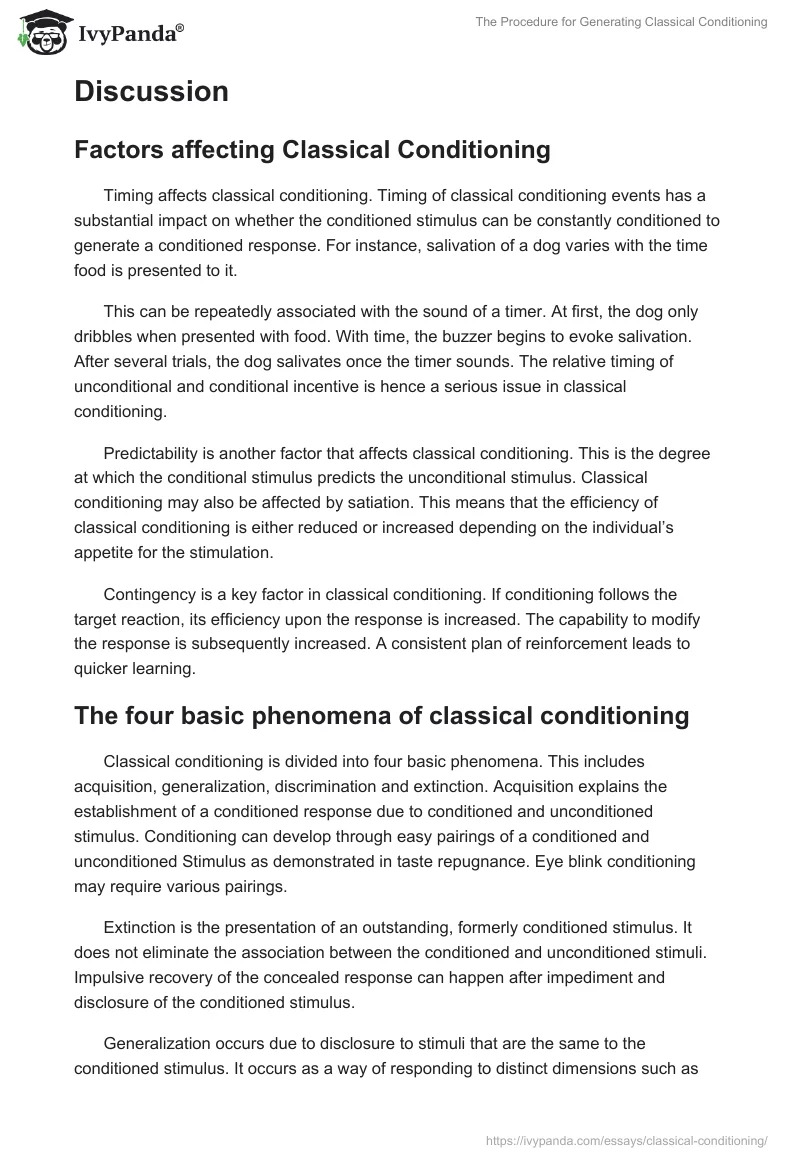Introduction
Classical conditioning is the presentation of occurrences defined experimentally through a discrete temporal association. It is also known as respondent or Pavlovian conditioning. It was initially established by Ivan Pavlov, a Russian Psychologist. In classical conditioning, learning takes place at the behavioral, neural and cognitive levels.
The procedure for generating classical conditioning entails presentation of an impartial stimulus in conjunction with a stimulus of some importance. This neutral stimulus can be an occurrence that does not lead into an explicit behavioral reaction from the individual under examination. On the contrary, presentation of the relevant stimuli inevitably evokes an intrinsic and reflexive response.
The common forms of classical conditioning used in the study of neural configurations and functions include fear conditioning, foot reduction conditioning and eye blink conditioning. A relationship develops between the different stimuli in such a way that the organism reacts to all the stimuli.
The concepts involved in classical conditioning include Unconditioned Stimulus (US), Unconditioned Response (UR), Unconditioned Relationship (UR), Conditioning Stimulus (CS) and Conditioned Relationship (CR). Unconditioned Stimulus creates a reaction while Unconditioned Response comprises of things that are already educed by the Stimulus.
Unconditioned Relationship refers to an association between the stimulus and the response while Conditioning Stimulus refers to a new stimulus delivered at the same time with the old stimulus. Conditioned Relationship refers to the association generated by combining a new stimulus with a former response.
Discussion
Factors affecting Classical Conditioning
Timing affects classical conditioning. Timing of classical conditioning events has a substantial impact on whether the conditioned stimulus can be constantly conditioned to generate a conditioned response. For instance, salivation of a dog varies with the time food is presented to it.
This can be repeatedly associated with the sound of a timer. At first, the dog only dribbles when presented with food. With time, the buzzer begins to evoke salivation. After several trials, the dog salivates once the timer sounds. The relative timing of unconditional and conditional incentive is hence a serious issue in classical conditioning.
Predictability is another factor that affects classical conditioning. This is the degree at which the conditional stimulus predicts the unconditional stimulus. Classical conditioning may also be affected by satiation. This means that the efficiency of classical conditioning is either reduced or increased depending on the individual’s appetite for the stimulation.
Contingency is a key factor in classical conditioning. If conditioning follows the target reaction, its efficiency upon the response is increased. The capability to modify the response is subsequently increased. A consistent plan of reinforcement leads to quicker learning.
The four basic phenomena of classical conditioning
Classical conditioning is divided into four basic phenomena. This includes acquisition, generalization, discrimination and extinction. Acquisition explains the establishment of a conditioned response due to conditioned and unconditioned stimulus. Conditioning can develop through easy pairings of a conditioned and unconditioned Stimulus as demonstrated in taste repugnance. Eye blink conditioning may require various pairings.
Extinction is the presentation of an outstanding, formerly conditioned stimulus. It does not eliminate the association between the conditioned and unconditioned stimuli. Impulsive recovery of the concealed response can happen after impediment and disclosure of the conditioned stimulus.
Generalization occurs due to disclosure to stimuli that are the same to the conditioned stimulus. It occurs as a way of responding to distinct dimensions such as color, volume, structure, meaning and sound. To know whether generalization has happened, the identical conditioned or test stimulus should be evaluated.
This should be done in the absence of the unconditioned stimuli so as to identify what form of response appears. Discrimination serves to authenticate the dissimilarities amongst conditioned stimuli. It differentiates between paired and non-paired stimuli so as to induce a conditioned response with momentous events (Lavond & Steinmetz, 2003).
Reference
Lavond, G. D., & Steinmetz, E. J. (2003). Handbook of classical conditioning. Boston: Kluwer Academic Publishers.


